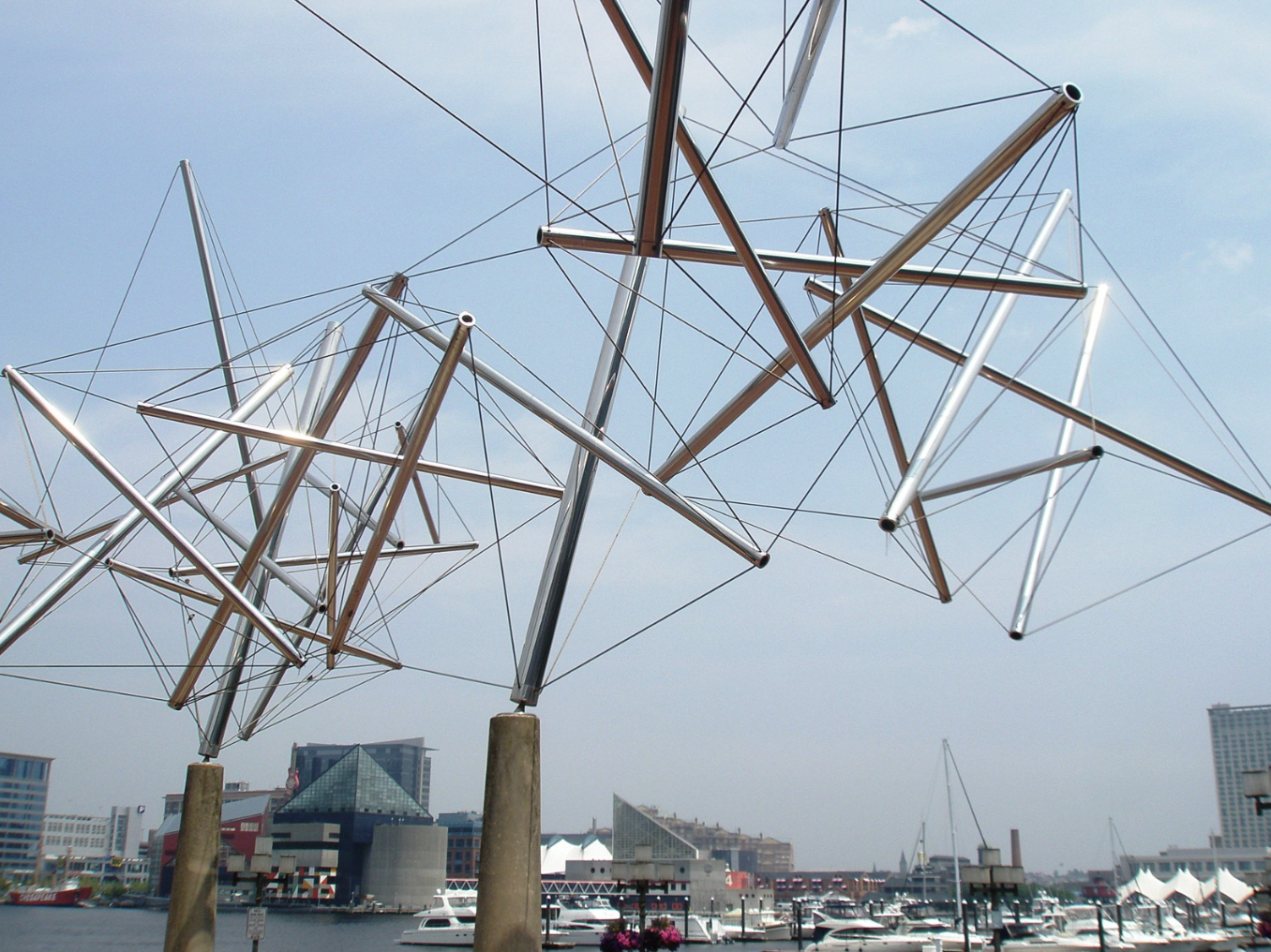Tensegrity
WHAT IS TENSEGRITY AND HOW DOES IT RELATE TO A MOVEMENT
PRACTICE?
By Mark Finch.
Tensegrity is currently a popular term being talked about in almost every somatic field. Let's explore exactly what the word means and the implications it has for a movement and Pilates practice. The word 'tensegrity' is a combination of two words - tension and integrity. It refers to the strength or integrity of structures as being based on the balance of tension and compression components. The word was first coined by Kenneth Snelson, then popularized by Buckminster Fuller and now appears in many places including in the work I teach, Thomas Myers' Anatomy Trains. Once the principles are understood, and felt in the body they evoke a lightness and efficiency in movement. I took the picture below while on holiday in Europe. It shows a portion of one of Snelson's sculptures (part of a 130 foot mast). Notice that the metal poles don't touch, but remain stable in relation to their neighbors. The shape is maintained but by a balance of tension across the entire structure, not by rigid joints.
So let's see if we can make the leap from the metal and wire of Snelson's sculpture, to the human body. A tensegrity structure is one thatcontains 'continuous tension members (the wires) and discontinuous compression members (the metal poles) and operates with maximum efficiency'. The first two parts of this definition can be applied to human anatomy. The bones act as discontinuous compression members. In the ideal state they get very very close but don't actually touch each other. They are literally floating in a sea of myofascia. The tension component of the anatomy can be understood by reading Thomas Myers' book Anatomy Trains. Myers describes the reality that myofascia is continuous across bones and joints, and that it transmits tensional forces across the entire structure. Rather than seeing the body as a collection of individual muscles we can grasp the tensegrity concept by understanding that the myofascia is arranged, and behaves, in lines of 'pull'. This brings us to the third part of the definition and possibly the most relevant to a movement practice: that is, 'the structure operates with maximum efficiency'. Efficiency can be defined firstly, as the body executing the chosen skill appropriately: secondly, as having the lowest compression cost possible (think 'staying as long or tall as possible as you move); thirdly, as performing the movement with the least amount of excess tension.
There are no muscles that can push two bones apart, all they can do is pull and any excessive pull creates compression. Excessive tension or effort not only creates compression in the spine but limits breathing and other physiological flows necessary to ideal muscle function. To achieve maximum efficiency in a movement think about staying as long as possible while performing the movement with the least possible amount of excess effort (or the greatest amount of ease).
Imagine if you will, a mentor or respected colleague moving in a way that conveys lightness and ease. This lightness and ease can be described as a state of tensegrity, because the body is not gripping or working harder than it needs to in any one place. Compare this image with one of a beginner where excess tension will often show up in the neck, jaw, hands or thighs. Such excess tension prevents easy movement of the body and loads the joints. Learning to see and feel these areas of high tension, and achieving a more even distribution of effort will not only please the eye - your joints, organs and ligaments will thank you as well.


